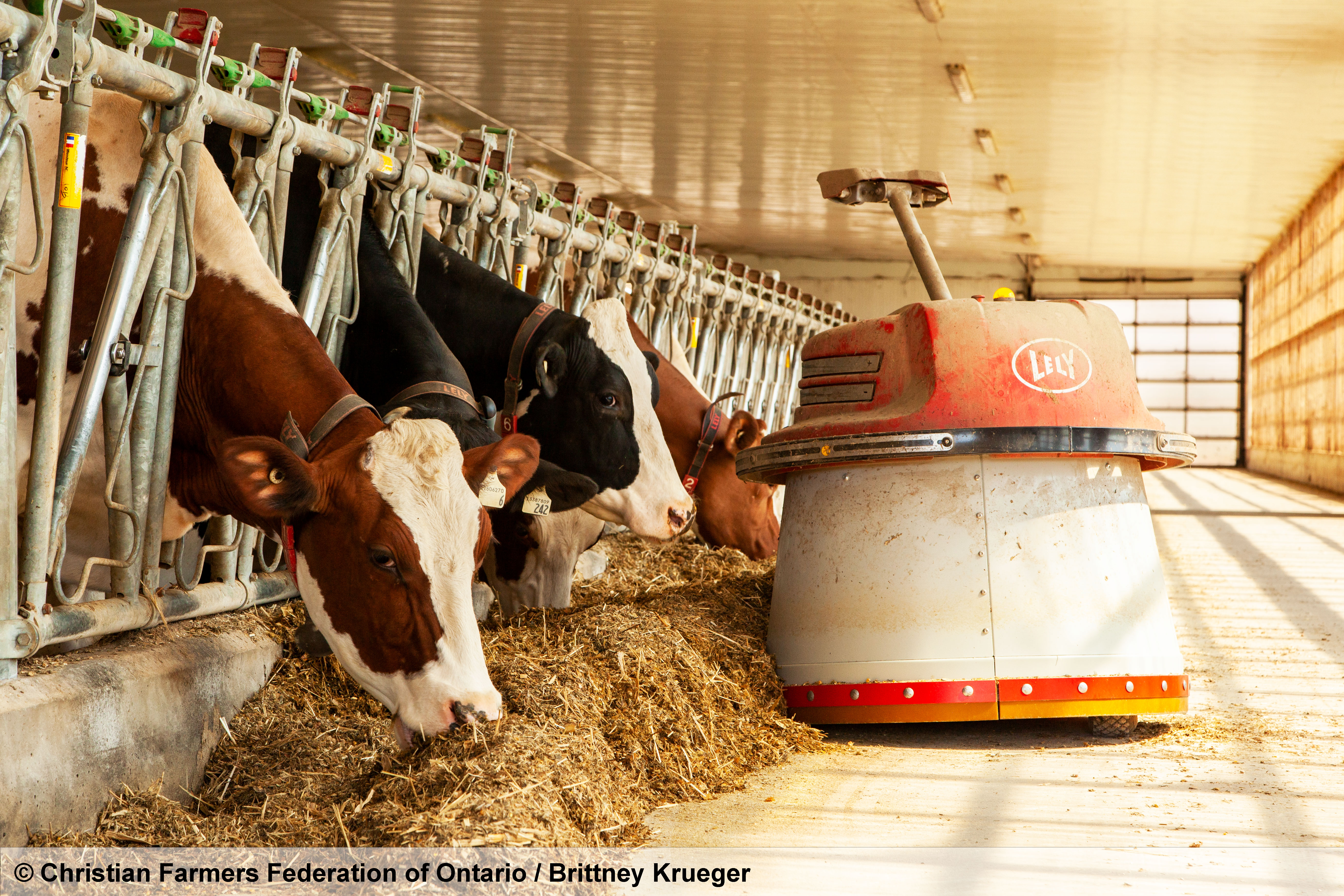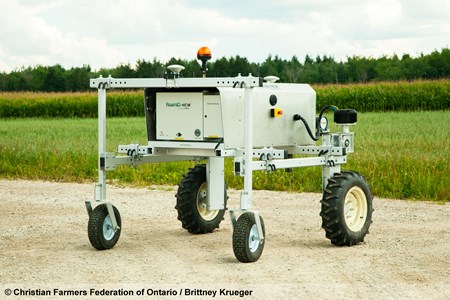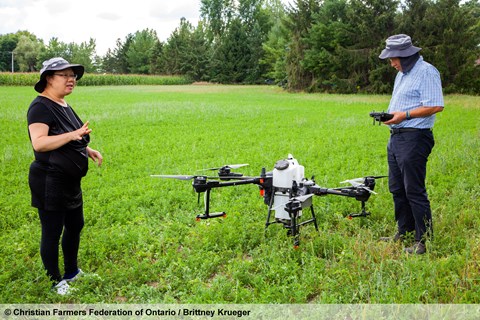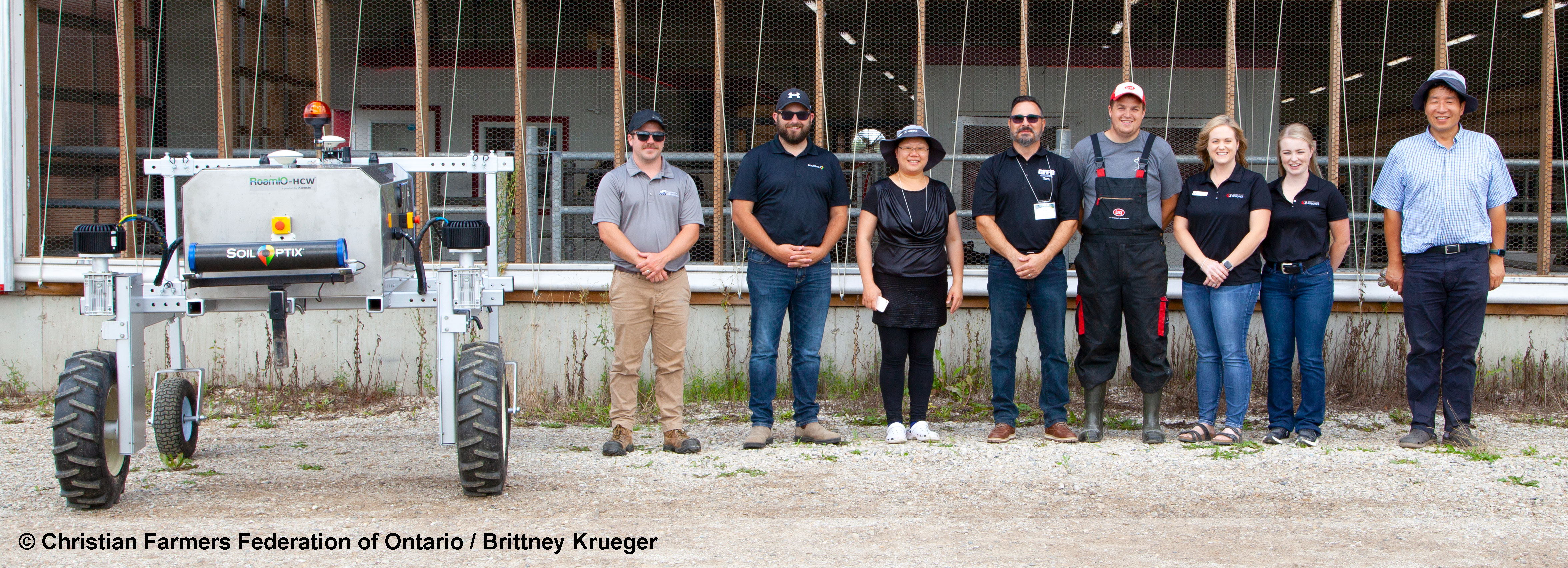Innovation–Improving Yields and Stewardship
September 2, 2022 | Suzanne Armstrong

Farmers are constantly being asked to do more with less. Farmers’ efforts are supported by ongoing research and innovation both from the private sector and academia, working to find new ways to reduce labour needs, improve efficiency, increase production, improve animal welfare and reduce environmental risks.
Farming does not stand still. Innovations and improvements mean the bar is constantly moved forward. When government and the marketplace ask farmers to meet ever-higher standards, we can say confidently that farmers do constantly improve, and can rely on innovations in technology to help them along the way.
Our recent CFFO Agri-Day summer event focused on “Big Tech” developed specifically for agriculture.
Working on the “bleeding edge” of field-robot technology, Haggerty Creek is watching innovations globally to see what may be suitable for Ontario agriculture.  They participate in beta testing new robots. Technology still early in the process often has many kinks to work out, and a lot of testing and trialing needed. They operate a collection of field robots, which they rent for a season or use to do custom work. Some machines are ideal for large fields, as are common in western Canada. Other machines are more suited to Ontario’s typically smaller fields or to specialty crop operations.
They participate in beta testing new robots. Technology still early in the process often has many kinks to work out, and a lot of testing and trialing needed. They operate a collection of field robots, which they rent for a season or use to do custom work. Some machines are ideal for large fields, as are common in western Canada. Other machines are more suited to Ontario’s typically smaller fields or to specialty crop operations.
Drones also have many different field applications and offer unique advantages because they operate from the air. Wonderfull Inc./DJI Agriculture demonstrated a drone designed for aerial application of liquids such as fertilizer, herbicides and pesticides. Drones are well-suited for smaller fields, uneven terrain and precise applications in small areas within a field. Because of the characteristics of drones, applications reach both the top and undersides of leaves when applying things like pesticides and foliar fertilizers. This allows significantly reduced rates of application with the same effectiveness, which reduces costs and benefits the environment.
While soil testing may not have the same “lights and buttons” appeal of robots and drones, there can be just as much technological innovation involved in creating more accurate maps of soil conditions. SoilOptix is working to help farmers find pockets of opportunity by giving them a better understanding of the soil conditions in their fields. This knowledge allows farmers to improve yields and input management.
Technology is not just for field crops. Grand River Robotics demonstrated the Lely milking robot installed on the hosting Boris Acres Dairy Farm. While this is a more established technology, improvements with new iterations are always moving the envelope further.
While many farmers may be hesitant to adopt brand new technologies, there are ongoing challenges to increase adoption even of established technology. In Ontario, approximately only half of agricultural fields are monitored with some form of soil testing, for example. Increased adoption brings with it increased stewardship of inputs, reduced environmental impact and yield improvements. But it’s not just the rate of uptake that matters.
What matters most is the innovation farmers add as they incorporate new technology into their farm operations. Farmers bring technology to life. This is where the rubber meets the road, and the bright ideas, years of development and testing, and often costly process of bringing new technology to market, finally come to make an impact on the agriculture industry.

Seen above: Presenters from Haggerty Creek, SoilOptix, Wonderfull Inc./DJI Agriculture, and Grand River Robotics, CFFO General Manager Tom Tavani, and Niels Kieftenburg.
Suzanne Armstrong is Director of Policy & Research for the Christian Farmers Federation of Ontario. The CFFO Commentary represents the opinions of the writer and does not necessarily represent CFFO policy. The CFFO Commentary is heard weekly on CFCO Chatham, CKXS Chatham, CKNX Wingham, and CHLP Listowel.
 Skip to main content
Skip to main content